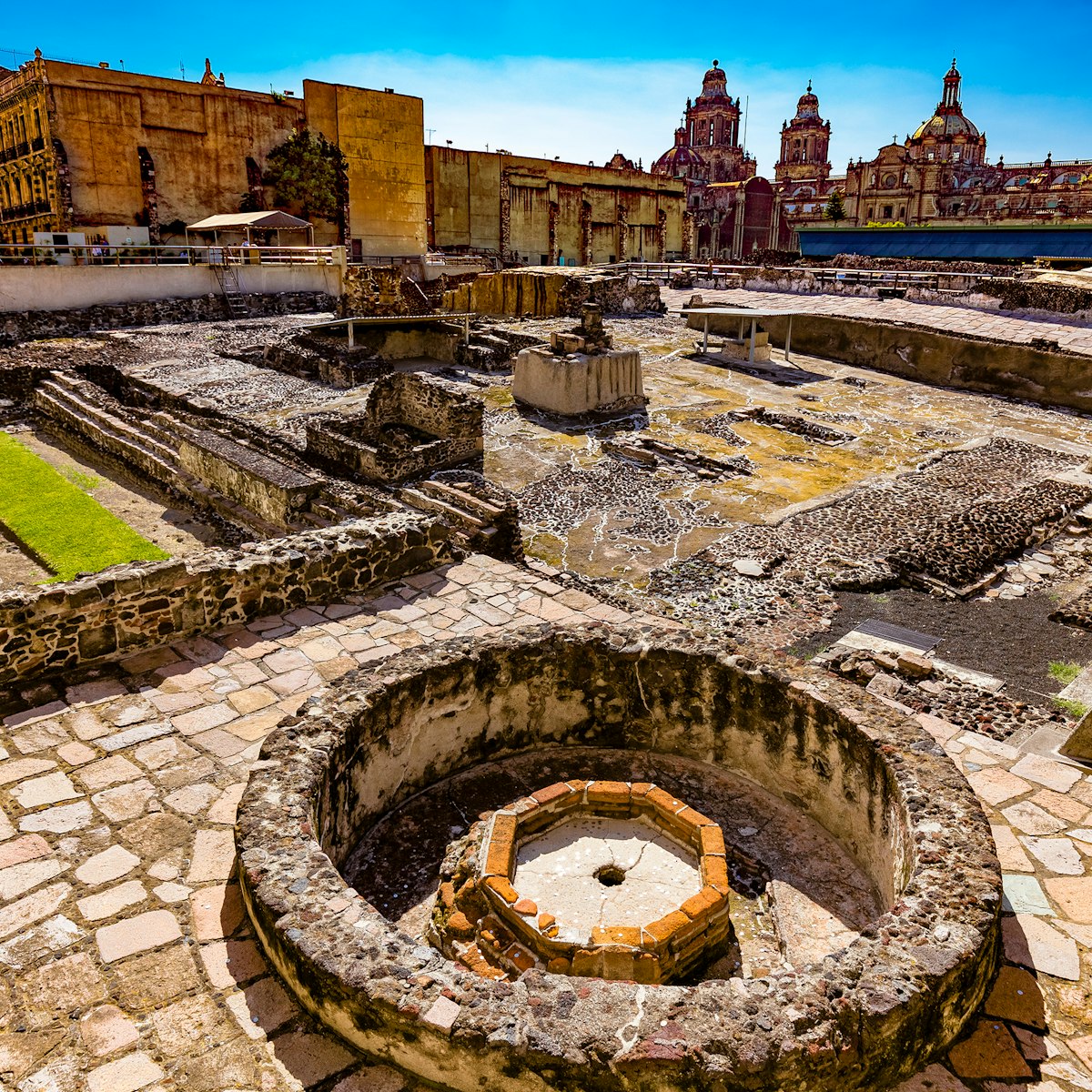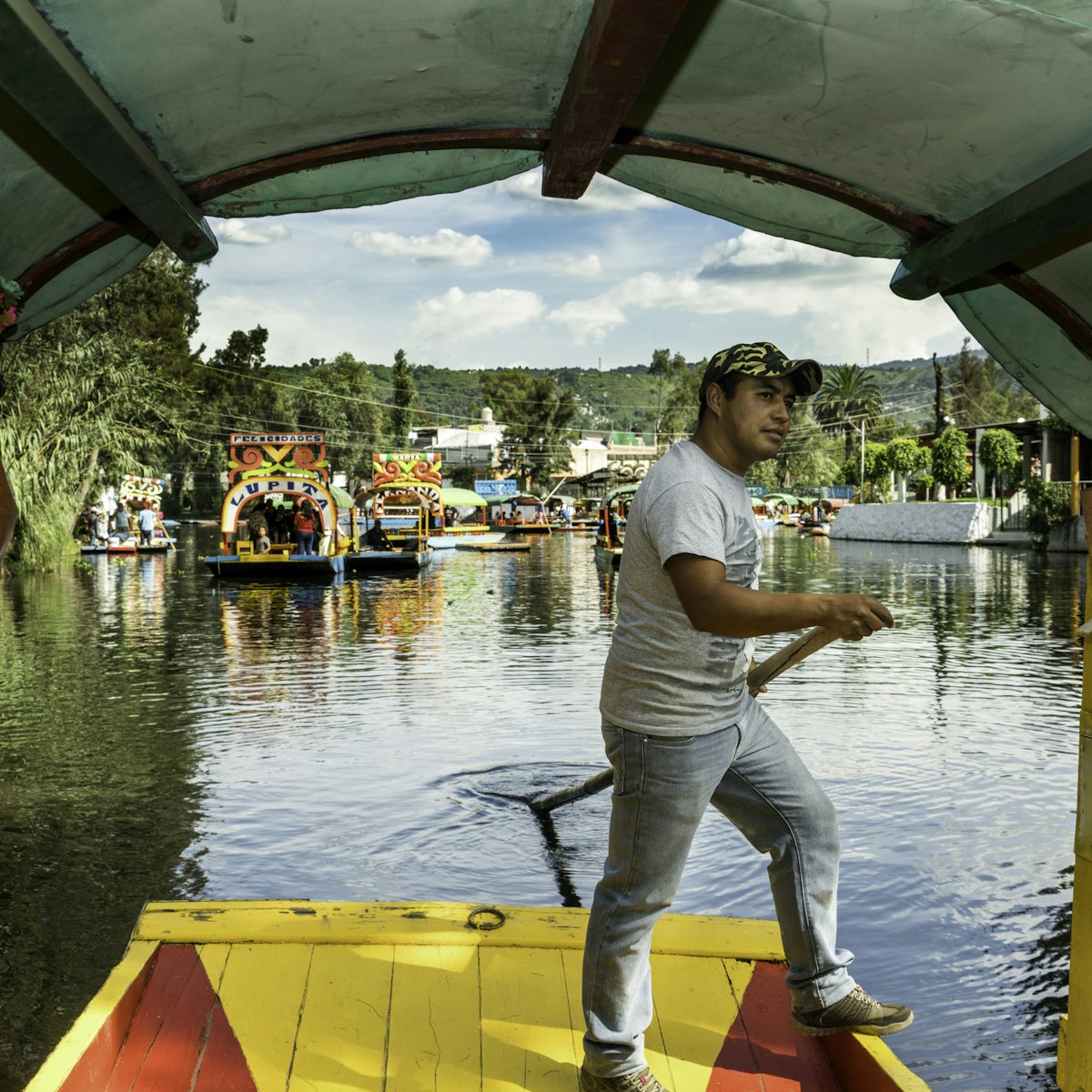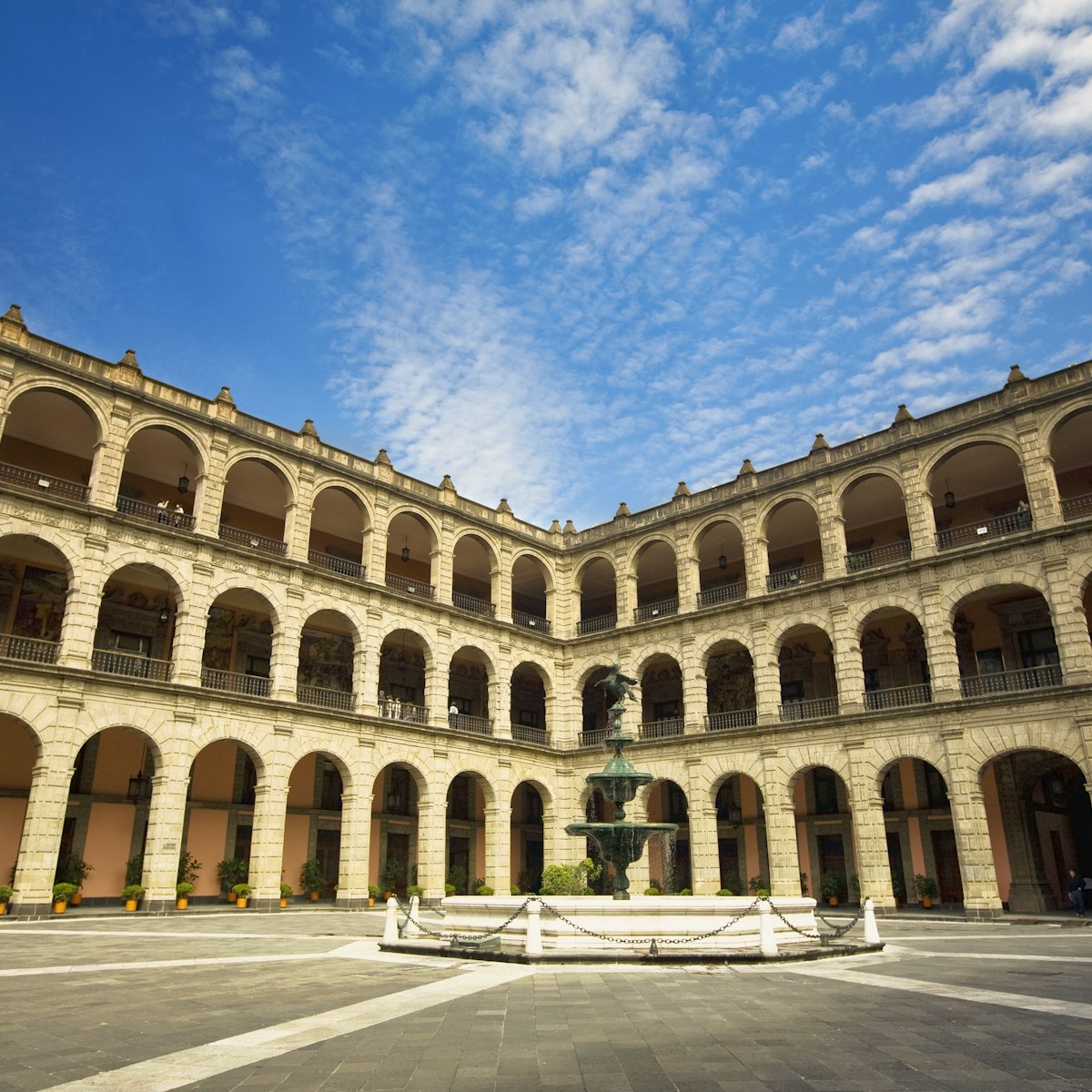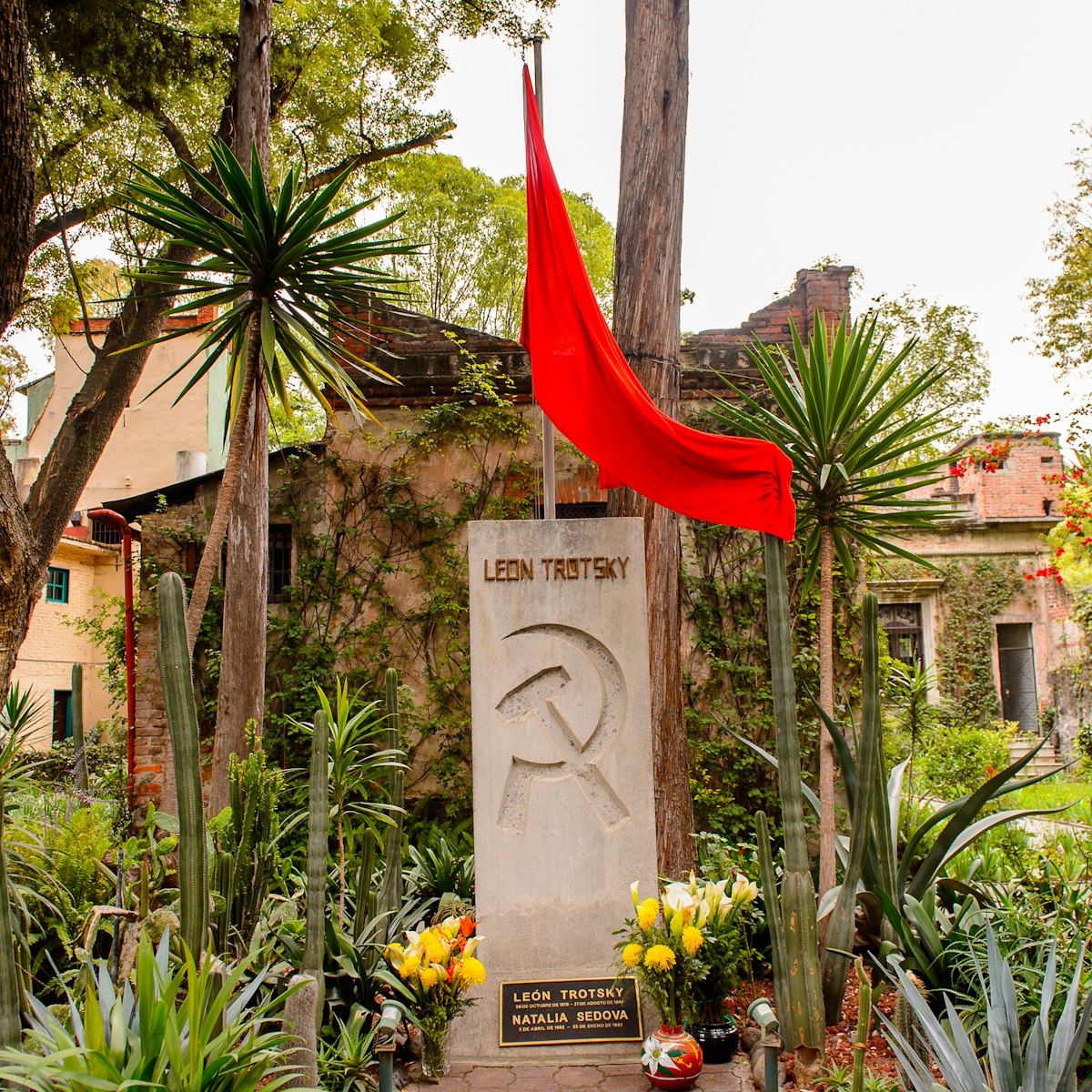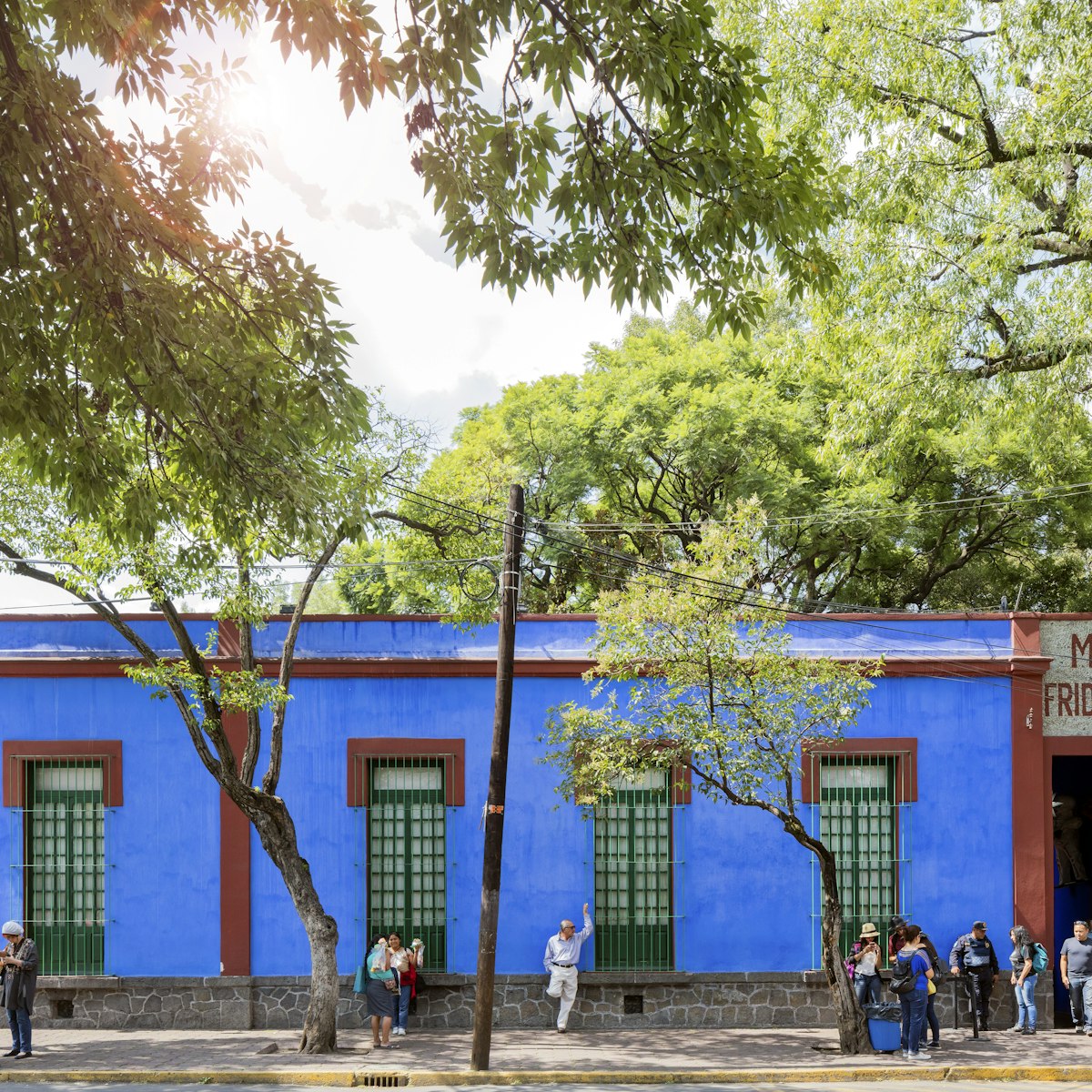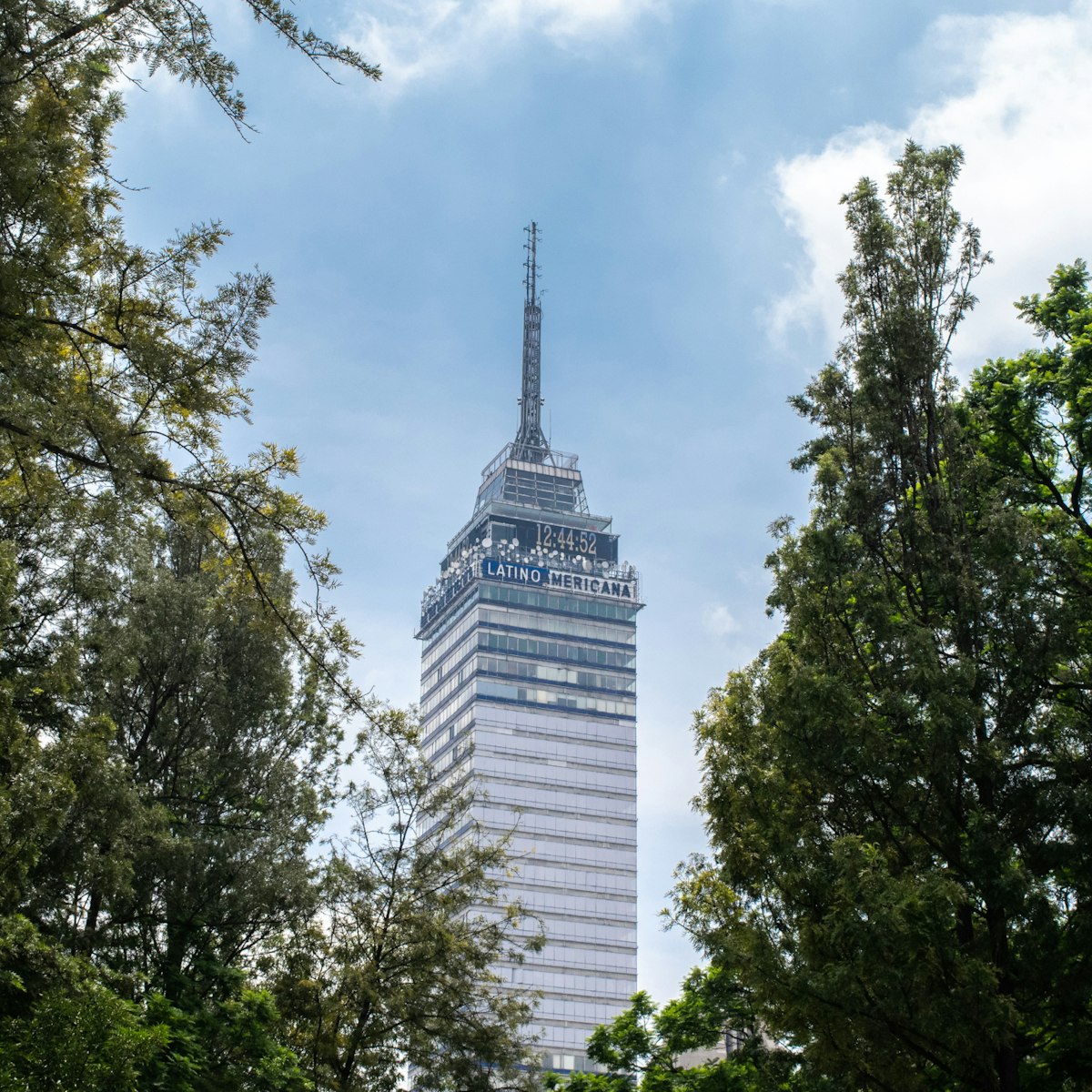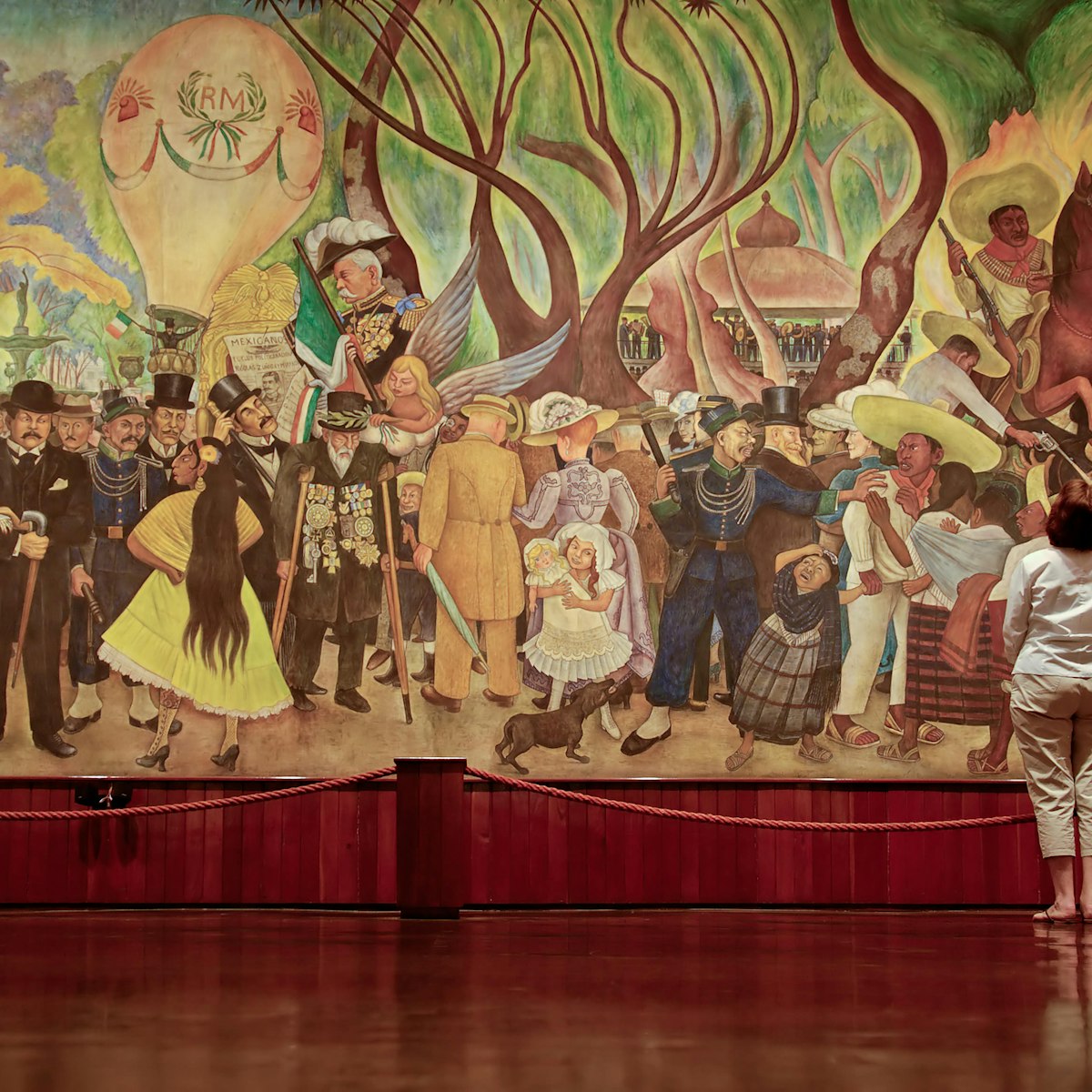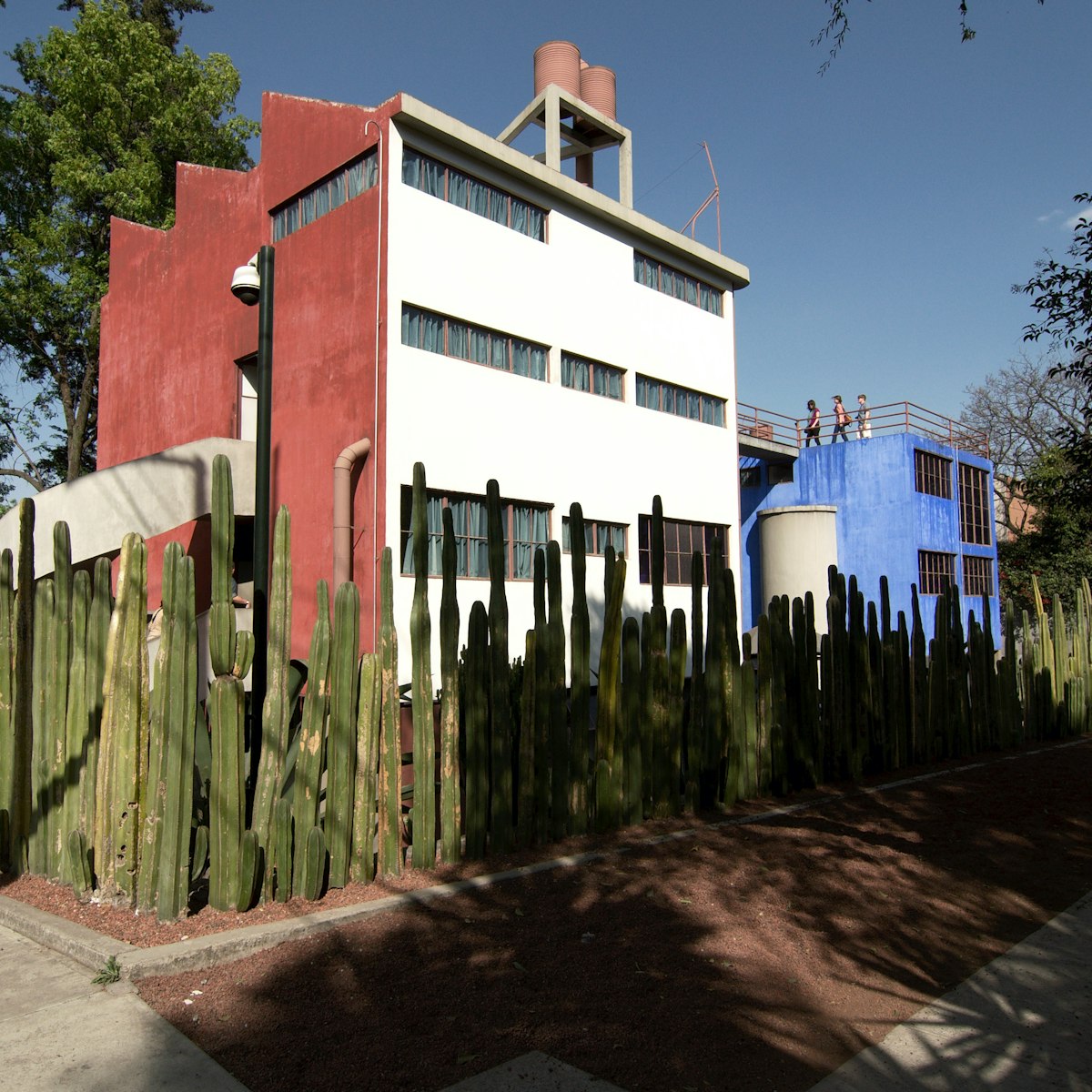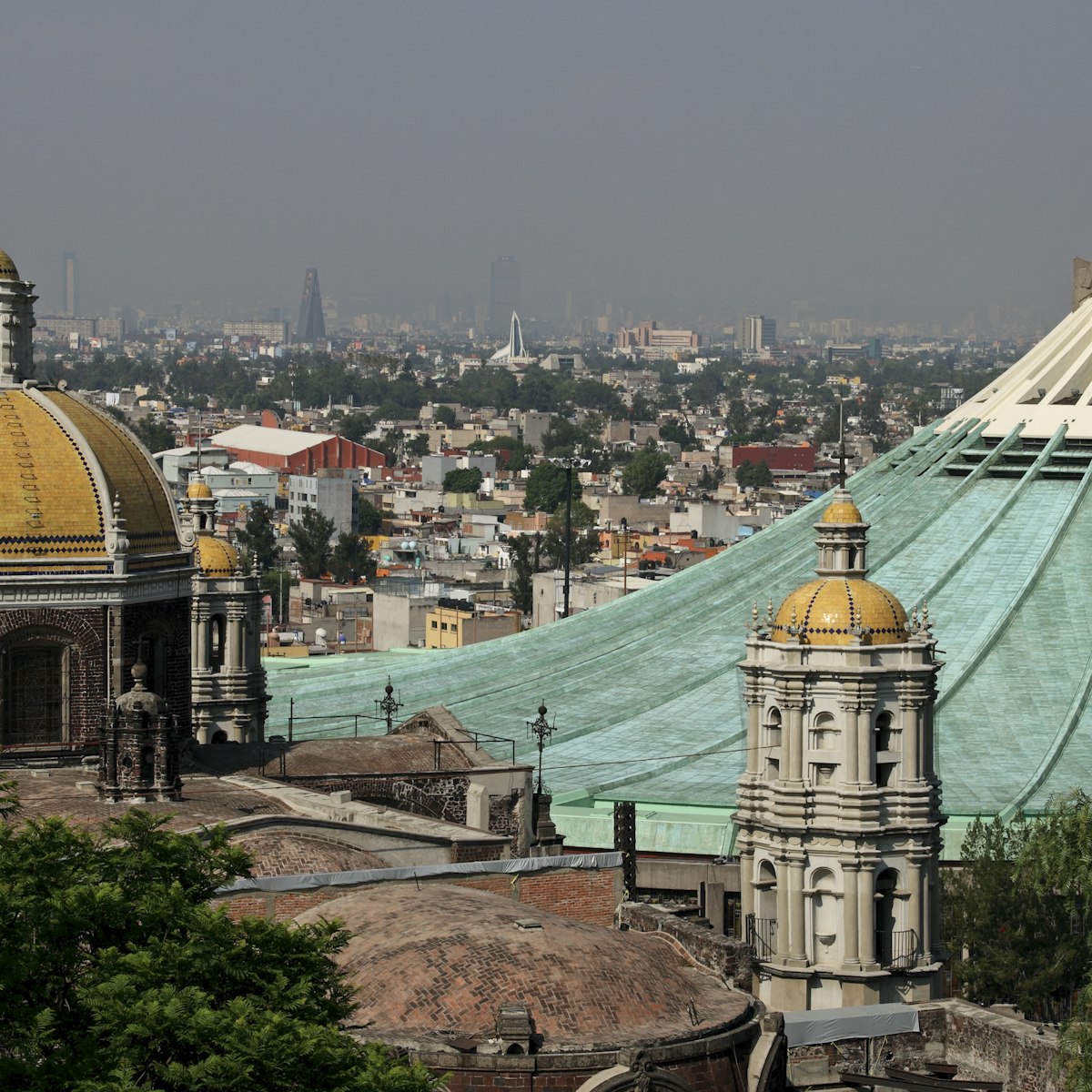
A cult developed around this site after a Christian convert named Juan Diego claimed in December 1531 that the Virgin Mary appeared before him on the Cerro del Tepeyac (Tepeyac Hill). After numerous sightings, so the story goes, the lady’s image was miraculously emblazoned on Diego's cloak, causing a bishop to believe the story and build a shrine in her honor. To this day the basílica remains a place of pilgrimage and worship.
Over the centuries Nuestra Señora de Guadalupe came to receive credit for all manner of miracles, hugely aiding the acceptance of Catholicism by Mexicans, helped greatly by presenting her with Mexican facial features. Despite the protests of some clergy, who saw the cult as a form of idolatry (with the Virgin as a Christianized version of the Aztec goddess Tonantzin), in 1737 the Virgin was officially declared the patron of Mexico. Two centuries later she was named celestial patron of Latin America and empress of the Americas, and in 2002 Juan Diego was canonized by Pope John Paul II.
Today the Virgin’s shrines around the Cerro del Tepeyac (formerly an Aztec shrine site) are the most revered in Mexico, attracting thousands of pilgrims daily and hundreds of thousands on the days leading up to her feast day, December 12. Some pilgrims travel the last meters to the shrine on their knees.
Around 1700, to accommodate the faithful flock, the four-towered Basílica de Guadalupe was erected at the site of an earlier shrine. But by the 1970s, the old yellow-domed building (now called the Antigua Basílica) proved inadequate to the task, so the new blue-roofed Basílica de Nuestra Señora de Guadalupe was built next door. Designed by Pedro Ramírez Vázquez, it is a vast, round, open-plan structure with a capacity of more than 40,000 people. The image of the Virgin, dressed in a green mantle trimmed with gold, hangs above and behind the main altar of the basílica, where moving walkways bring visitors as close as possible. Mass is performed hourly.
The rear of the Antigua Basílica is now the Museo de la Basílica de Guadalupe, which houses a fine collection of colonial art interpreting the miraculous vision.
Stairs behind the Antigua Basílica climb about 100m to the hilltop Capilla del Cerrito (Hill Chapel), where Juan Diego had his vision, then lead down the east side of the hill to the Parque de la Ofrenda, with gardens and waterfalls around a sculpted scene of the apparition. Continue on down to the baroque Templo del Pocito, a circular structure with a trio of tiled cupolas, built in 1787 to commemorate the miraculous appearance of a spring where the Virgen de Guadalupe stood. From there the route leads back to the main plaza, re-entering it beside the 17th-century Antigua Parroquia de Indios (Parish of Indians).
To reach the Basílica de Guadalupe, take the metro to La Villa–Basílica station, then walk two blocks north along Calzada de Guadalupe. Both Capital Bus and Turibús hop-on, hop-off tourist buses make a stop near the Basílica.
 Publish for free
Publish for free

 zzdtravel
zzdtravel

